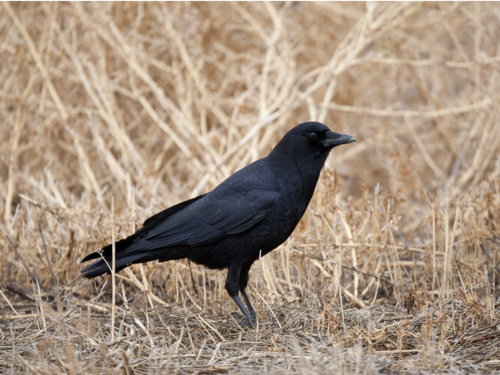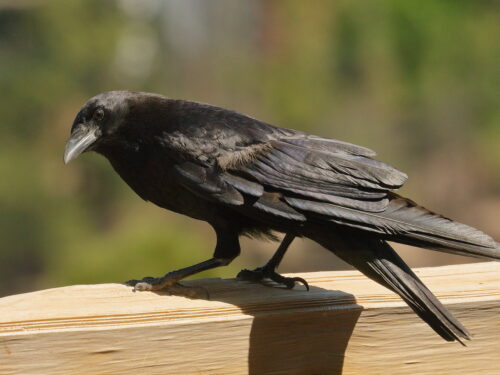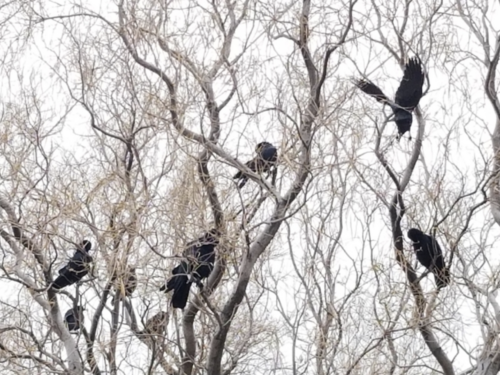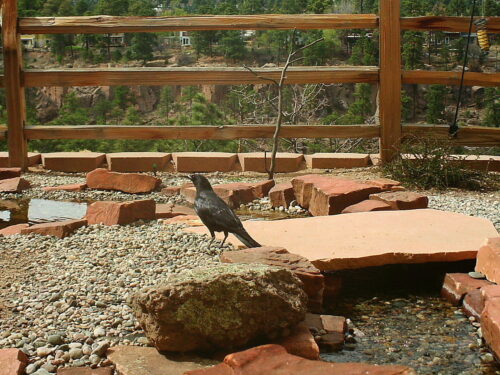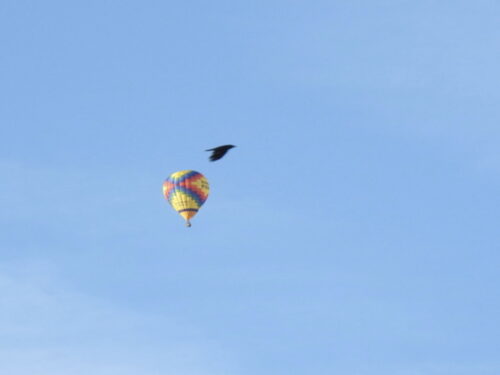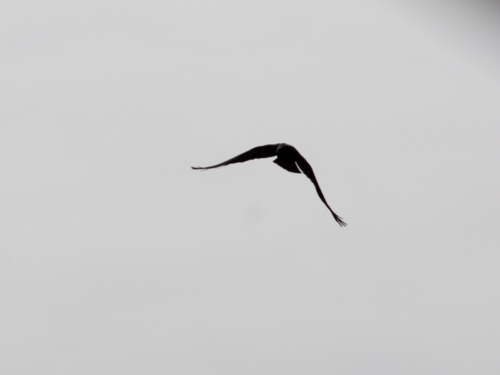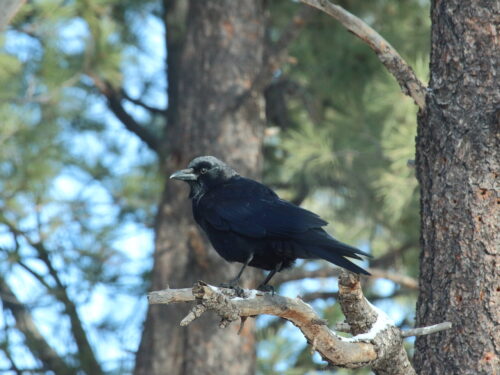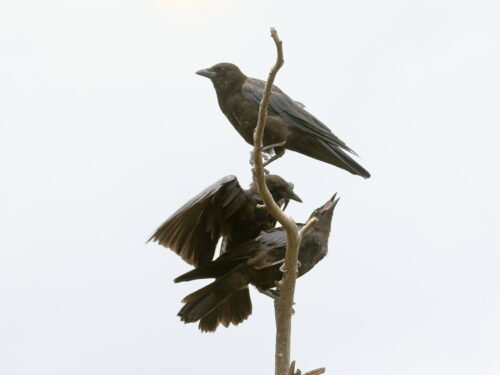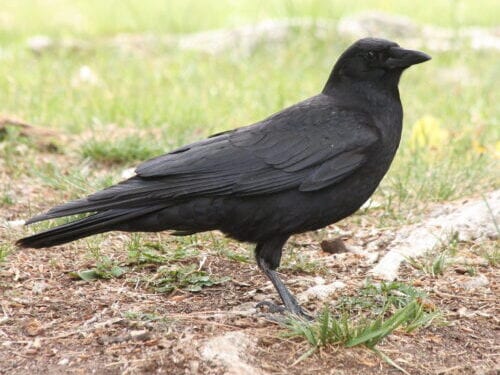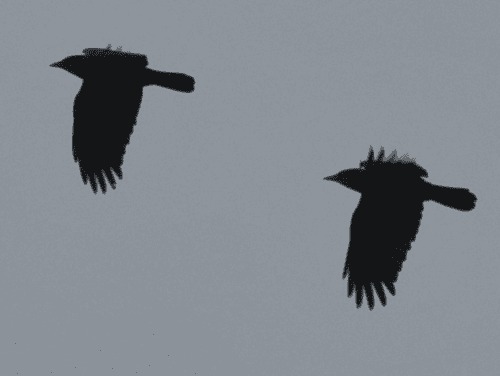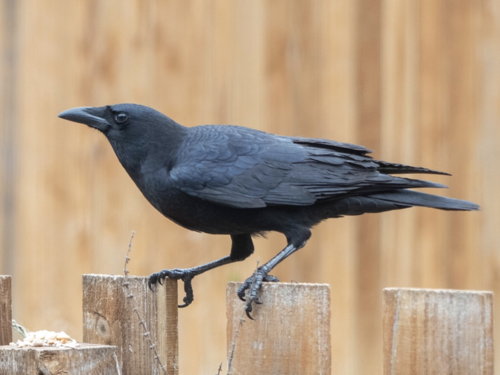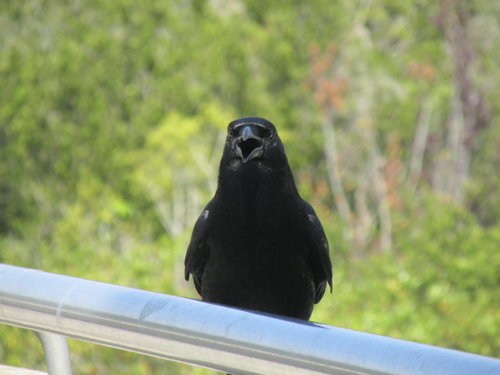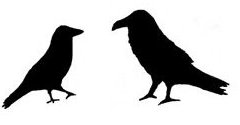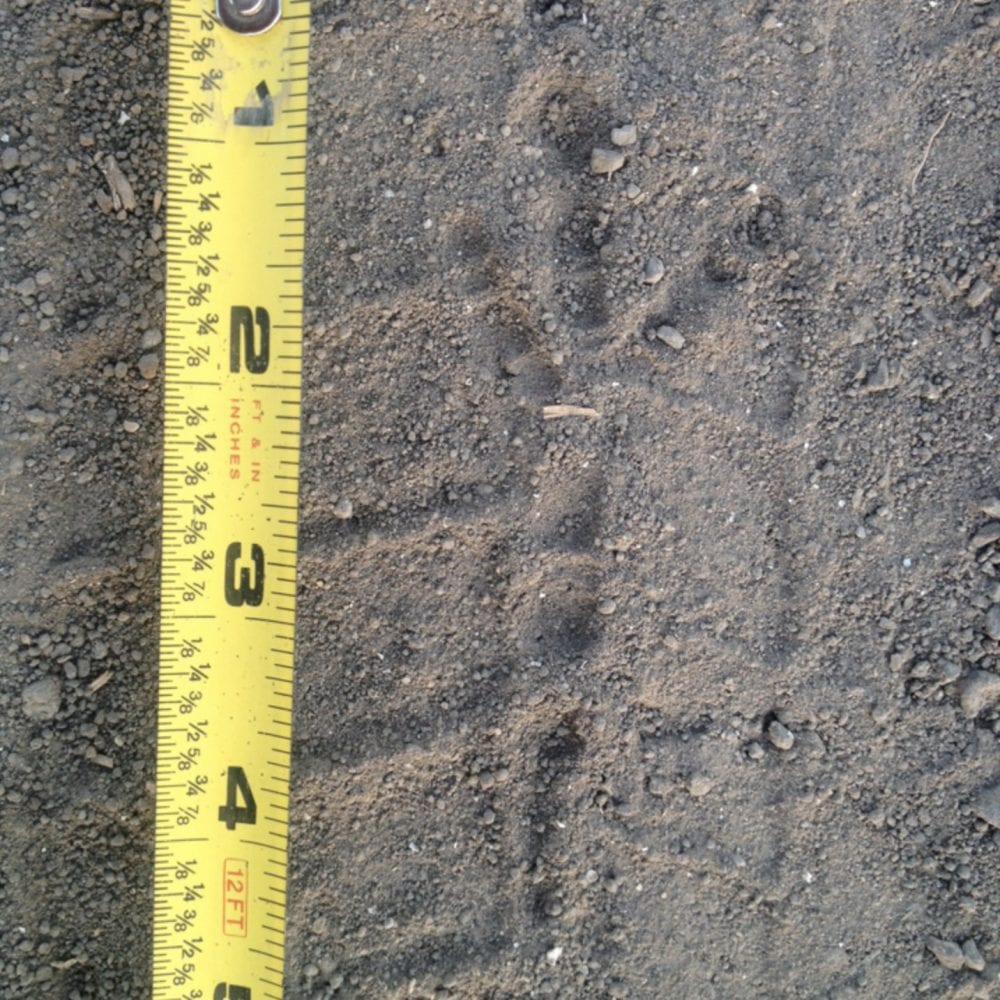American Crow
Scientific name: Corvus brachyrhynchos
Type: Bird
Family: Corvidae (Corvids)
Size: 16 to 21 inches long; 33 to 39-inch wingspan
Weight: 11 to 22 ounces
Life Span: 7 to 8 years
Physical Description
The American crow is a large, thick-necked bird that is essentially black all over including its long legs and straight bill. There is a bit of iridescent gloss over the body and the wings can appear blue-black. However, when a crow molts, the old feathers often seem brownish or scaly. The American crow has a tail that is short and rounded or squared off at one end. In flight, the wingtip feathers spread out to look like fingers.
Adult males and females look alike with the the females being slightly smaller. Young crows have brownish feathers and blue eyes that gradually turn to black as they mature.
Adults
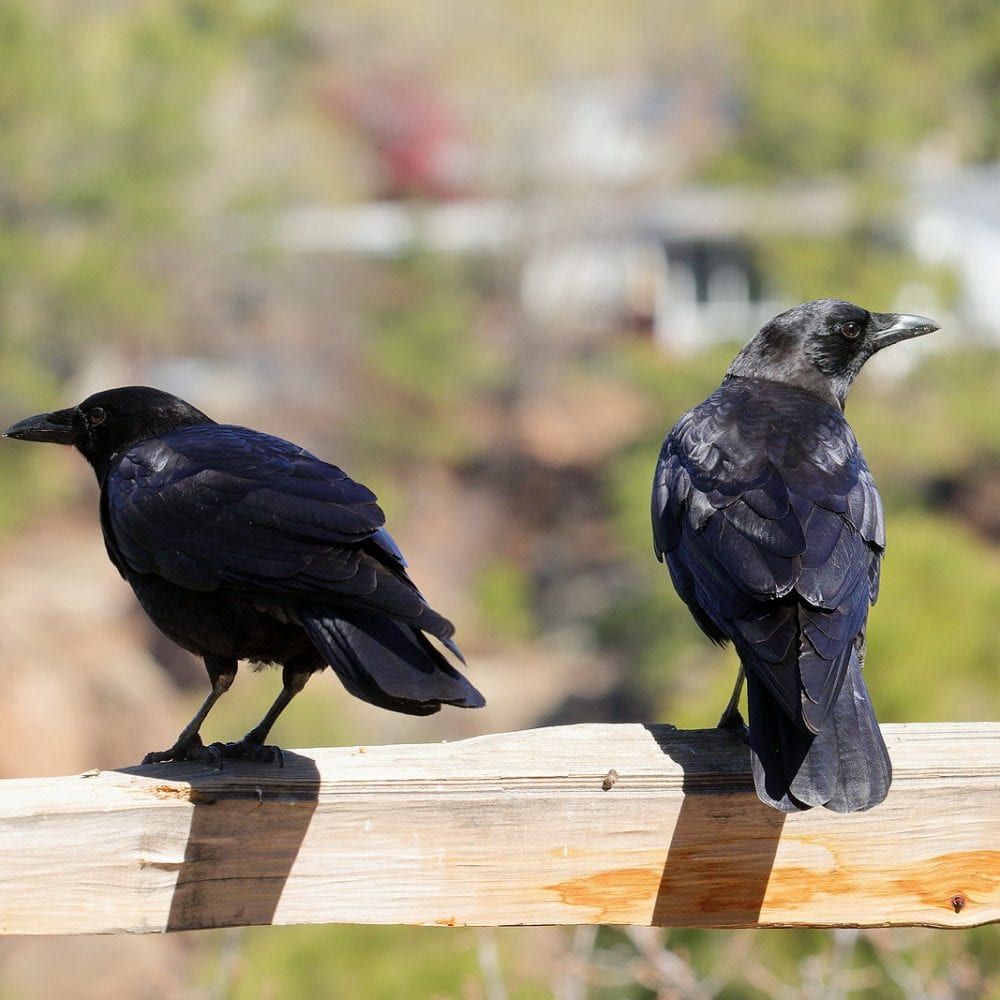
Juvenile
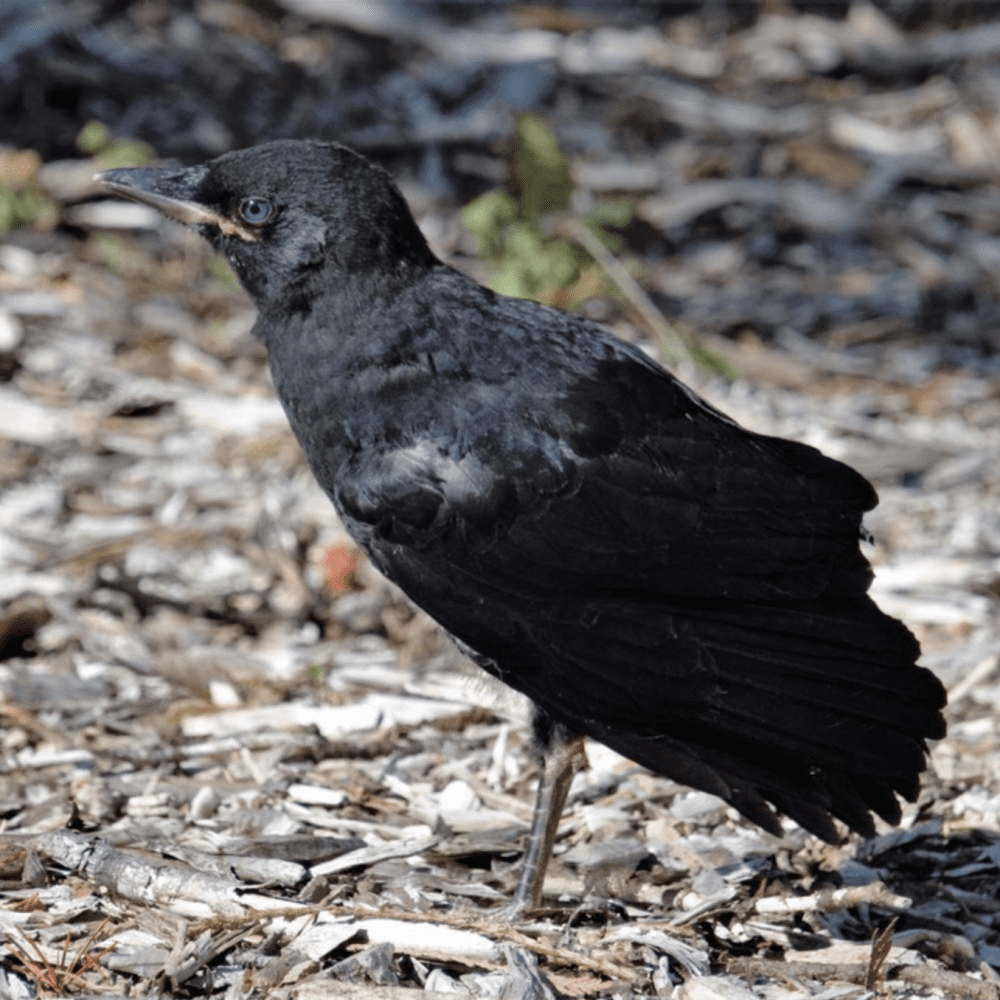
Range and Habitat
The range of the American crow extends across the United States and Canada. These birds are permanent residents in most of the US. Canadian and western US birds usually migrate short distances toward warmer areas for winter.
American crows can be found in a variety of different habitats from fields and farms to forests and urban areas. They tend to avoid dense forests.
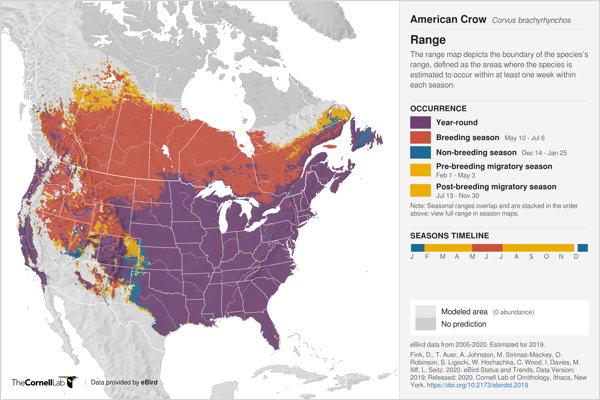
Diet
American crows are opportunistic feeders — they eat whatever is available. They will consume small animals such as frogs, mice, and young rabbits, insects and larvae, as well as fruits, grains, and nuts. They are significant nest predators, taking both eggs and nestlings. They will also scavenge at roadkills and eat garbage, but only rarely come to bird feeders.
These birds primarily forage on the ground or by walking along tree branches. They are capable of breaking open nuts either with their feet or by dropping them from up high. They may cache some food items for short-term storage.
Behavior and Social Life
American crows are generally considered to be one of the most intelligent birds. They are inquisitive as well as good learners and problem-solvers. They also have excellent memories. They always remember where they have hidden food, even if they have moved it several times. They can recognize human faces and will scold individuals like researchers that have come too close in the past.
American crows are also very social, sometimes forming flocks in the thousands, particularly when roosting at night. They defend a joint territory with all members assisting in chasing away predators. Members often preen each other. In some cases, crows have been observed keeping vigil over a fallen bird for several days.
Crows have a wide range of vocalizations and are able to communicate a variety of messages through their calls. They can even mimic the sounds made by other animals. Unlike many other birds, males and females make the same sounds. Young crows tend to make a gargling sound. Sometimes, pairs or family members will make the same sound to create a chorus. Their warning sounds are so specific that other animals can often use them as a signal of danger.
Eating
Calling
Life Cycle
During courtship, males fluff up their body feathers, spread their wings and tail, and bow while singing. The pair then perches close together, touching bills and preening. The pair make a nest that is high off the ground usually in a tree from sticks, twigs, bark, and weeds. They line the large “basket” with soft materials like grass and moss.
The female will usually lay 4 to 5 blue-green to gray-green eggs with brown and gray spots. The eggs hatch in about 18 days. The young are fed by both parents and will leave the nest about 4 to 5 weeks later. They often stay close to their parents and even help raise the next generation.
Nest Material

Macaulay Library ML318905141
Nest
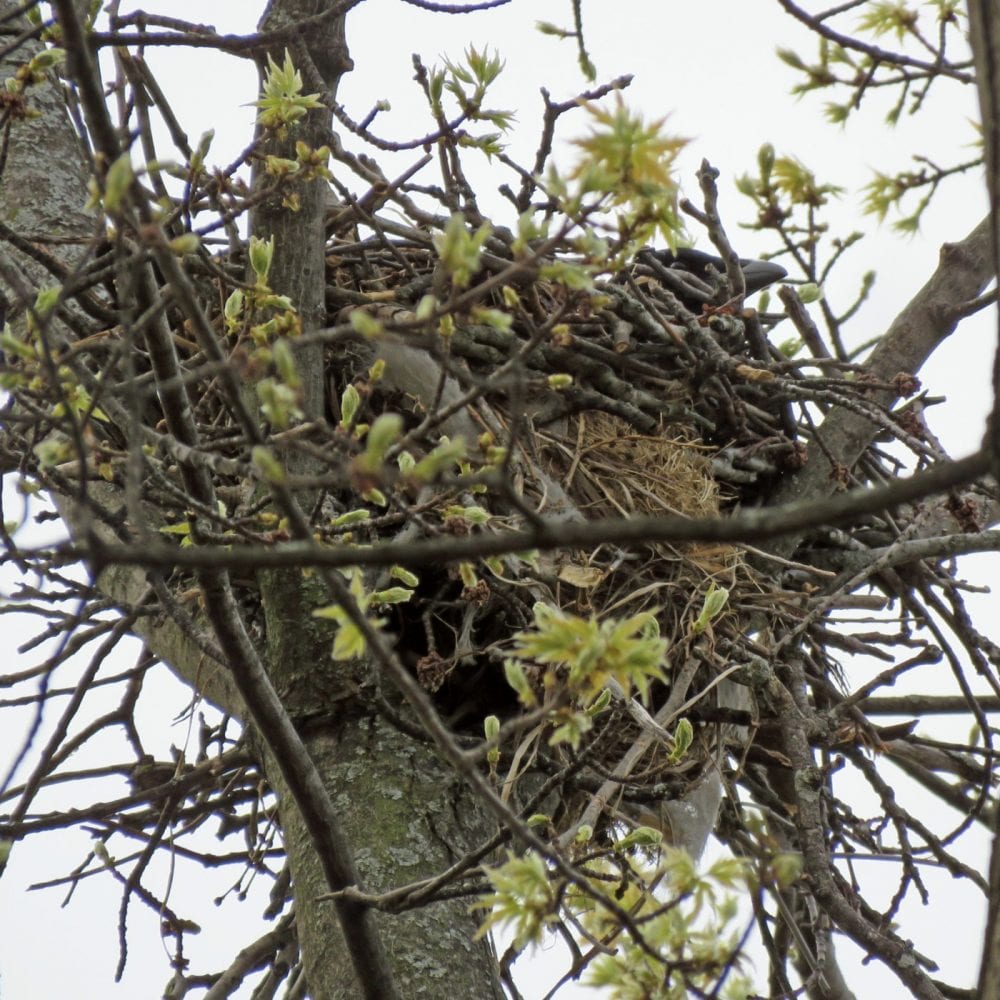
Macaulay Library ML326606331
Eggs
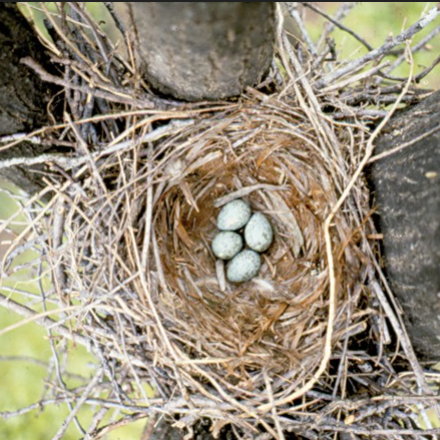
Macaulay Library ML89952491
Ecological Role
American crows have a generalized ecological role serving to spread seeds, keep insect populations down, and speed up decomposition of carrion.
Interactions With Humans
Flocks of American crows can have a negative impact on agriculture, particularly in orchards and cornfields, though is probably less than once thought. Still people usually consider crows to be noisy, messy, and capable of spreading diseases. While it is illegal to keep them as pets, they can still be hunted for sport is many states.
Interesting Facts
- A group of crows can be call a “cauldron”, “congress”, “horde”, “murder”, or “muster”.
- The brain-to-body ratio of a crow is equivalent to that of a chimpanzee.
- Crows may travel as far as 40 miles each day from feeding areas to a night time roost.
- American crows are fearless in chasing other birds much bigger than themselves.
- Crows are fascinated by and will collect shiny objects like rings and foil.
- A crow will pick up and run ants over its feathers or even lie down and rolling in an ant hill. It is thought that this process causes the ants to release their formic acid and make them more palatable to eat.
- Crows will watch other birds build their nests, making it easier to rob the eggs once they have been laid.
- An American crow’s diet can include up to 1000 different foods.
- American crows usually mate for life but males have occasionally be caught cheating.
- Crows have regional dialects.
- A young nestling can eat as many as 100 grasshoppers in 3 hours.
- The territory of an urban crow is only 10% of that of a rural crow.
- The American crow population has been significantly affected by infection with the West Nile virus.

